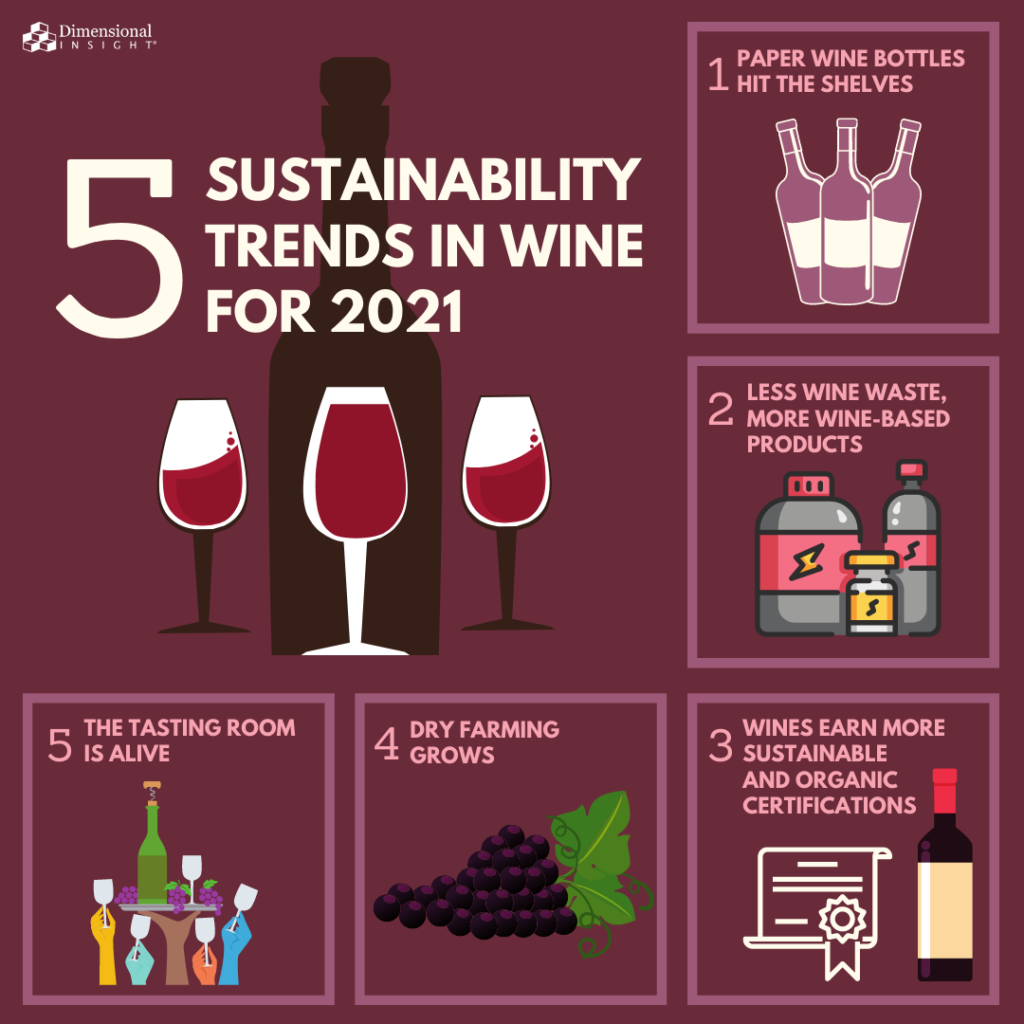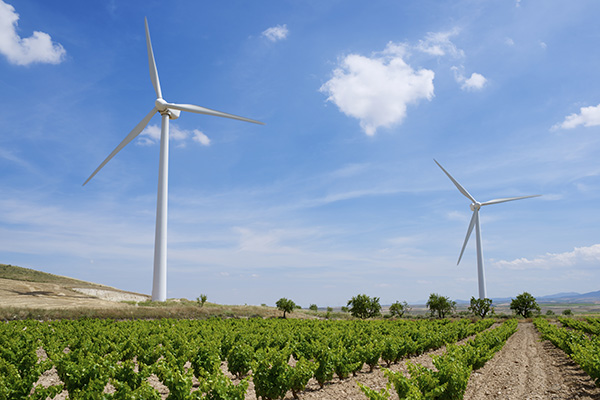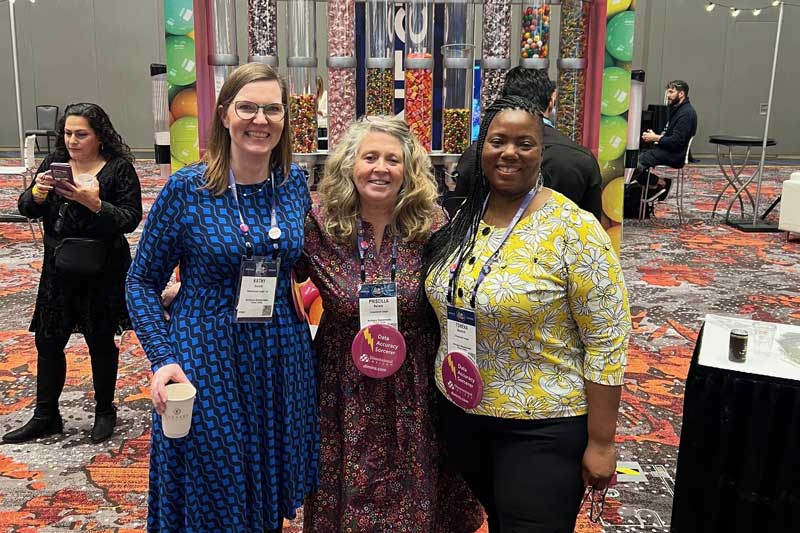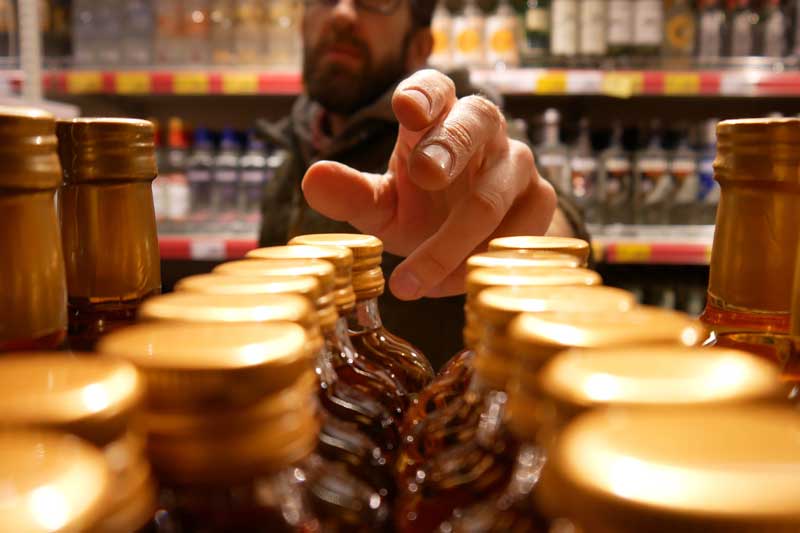As millennials increase their buying power and market share of wine sales, brands are adapting to match millennials’ values. Climate change and the environment are among that generation’s most significant concerns.
In fact, 73% of millennials say global warming is “personally important to them,” according to a report from Yale’s Program on Climate Communication.
The wine industry wants to protect the planet, too, and placate its consumers. Brands are responding by creating paper wine bottles, committing to less wine waste, and more.
1. Paper wine bottles hit the shelves
According to Beverage Daily, wine brands that switch to paper wine bottles will cut their carbon footprint by 84%, or six times less than a glass bottle.
Frugalpac, a company that created Frugal Bottle – a bottle made of 94% recycled cardboard – created a product that utilizes a water footprint four times less than that of a traditional bottle. These bottles have already hit the shelves in the United Kingdom.
When consumers think of wine, the predominant packaging remains a bottle. But, in recent years, canned wine sales increased exponentially, showing customers are open to drinking their wine differently.
“The launch of the Frugal Bottle is a big leap in sustainability without compromising wine quality,” Frugalpac owner Ceri Parke told Beverage Daily.
Expect brands to start utilizing more sustainable packaging in 2021.
2. Less wine waste, more wine-based products
Swisse, a health and wellness company, plans to utilize vineyards’ wine waste and transform it into dietary supplements and skincare products, according to Beverage Daily. Swisse will use grape skins and seeds and convert those into upcycled grape seed extract, known for its collagen and antioxidant properties.
Swisse produces the grape seed extract from leftover wine production, reducing the grape marc amount left to rot.
If this idea takes off, it could spur other trends to infuse more sustainable practices into the industry’s processes.

3. Wines earn more sustainable and organic certifications
Moving forward, more brands will strive to earn certified sustainability for their wine products in 2021 and beyond. Earning these certifications can help set lesser-known brands apart and cater to customers who want a brand that matches their values.
Wines that earn a USDA Organic certification do not use synthetic fertilizers, pesticides, and other chemicals to make their wine. These practices are good for the human body and the environment.
Even without that certification, some wines strive to be sustainable. Sustainable winemaking means the winemaking process protects the environment and still produces high-quality wines. Vineyards commit to maintaining soil health, recycling, conserving water, and using renewable energy technology like solar or wine throughout the winemaking process.
Sustainable wine doesn’t necessarily mean the ingredients are 100% organically grown, so there still may be some additives in it.
4. Dry farming grows
The dominant wine market in the United States remains Napa Valley and Sonoma Valley. But both regions have experienced unprecedented wildfires and droughts this past decade. The practice of “dry farming” is making a comeback, according to SevenFiftyDaily.
Dry farming practices include preserving soil moisture and forgoing irrigation. The grapevines adapt to the dry weather and conditions, and some say it even makes for better tasting wine.
“The wines that really curl my toes always come from regions that don’t allow irrigation,” Brad McLeroy, the winemaker at Ayres Vineyard in Newberg, Oregon, told SevenFiftyDaily.
If you’re wondering where the proof is, just look to Santorini, a Greek island that receives a few inches of rain a year but boasts an elite wine industry.
More and more vineyards will need to adopt dry farming practices as water becomes an increasingly scarce resource in regions that experience droughts. Look for more United States-based vineyards to implement dry farming practices in 2021.
5. The tasting room is alive
Some vineyards have been implementing organic and sustainable practices for years, but now those commitments will transfer to their tasting rooms. As vineyards build new tasting rooms, or update their preexisting ones, look for more tasting rooms to be LEED-certified or even to take part in the Living Building Challenge (LBC).
Created by the International Living Future Insitute, the LBC remains exclusive and hard to obtain for buildings. Buildings must meet seven performance areas and can’t get certified until the buildings have been built and operating for a full year.
The challenge requires that the building produces 10% more energy than it consumes, so it’s not only green, it produces green energy. The building’s water needs must also 100% come from capture precipitation or natural closed-loop water systems.
- 87% of Utilities Have Experienced at Least One Data Breach in Last Three Years - February 5, 2024
- Can Drones Lower Your Next Utility Bill? - January 10, 2024
- Onshore Wind Farms Are The Next Big Thing In Renewable Energy - December 6, 2023




